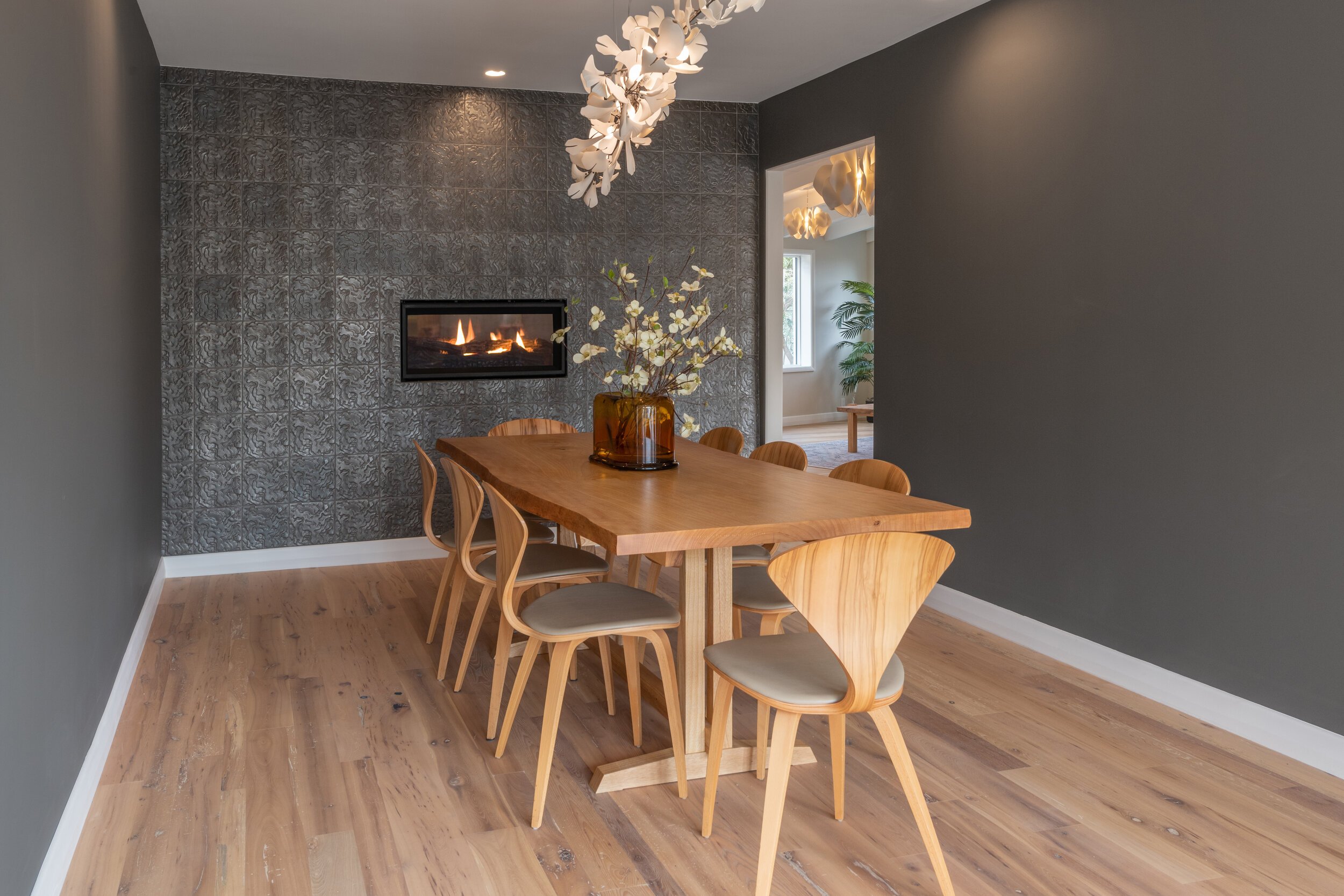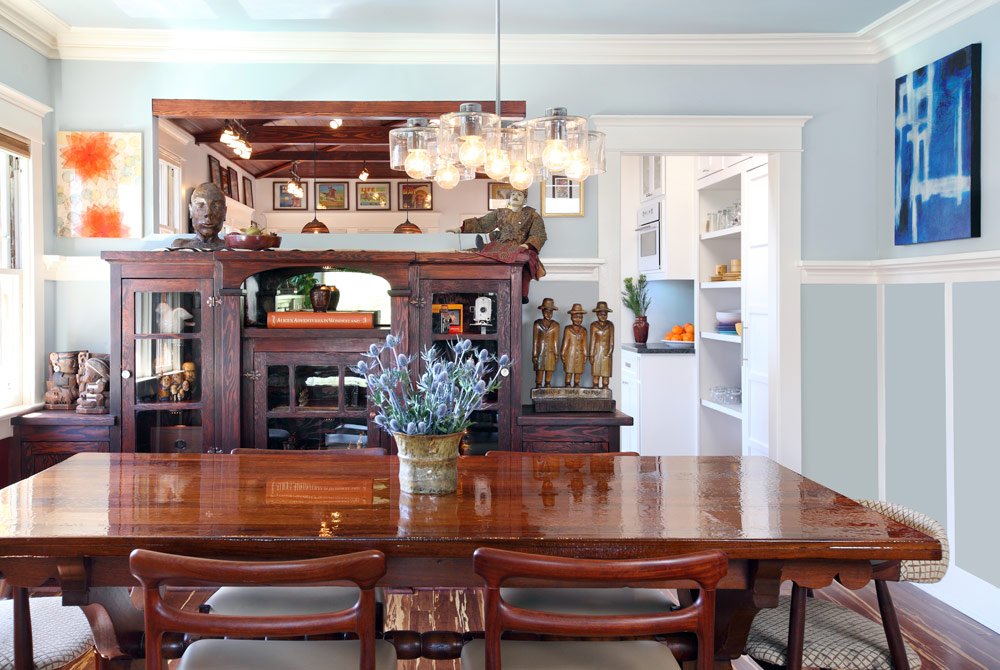Healthy Home Basics: How Paint Impacts Our Emotional, Physical, and Environmental Health
/The presence of paint in our homes is so prevalent that it often becomes overlooked as a building material. Paint can significantly impact our home spaces, with the ability to affect our mood and personal and environmental health. Color has been shown to have the ability to influence mindset and energy levels, and the thoughtful selection of paint color can help create a home space that aligns with personal goals for wellbeing. Earth tones are often considered to have a grounding, calming effect, with naturals offering a sense of peace and calm. More vibrant, saturated colors can energize a space, contributing to warm social atmospheres or promoting invigorating creative or exercise spaces. Many colors can also have symbolic connections or personal associations that can be used to create a certain mood or atmosphere. Taking the time to sample and explore colors that align with personality and design intent can help create a space that improves wellbeing and supports emotional goals.
While color is an important factor in paint selection, the use of paint in our built environments goes beyond color, with different paint types and qualities affecting aesthetics and our home's health. The ingredients of paint can vary, and researching material makeup can be important when selecting paint that aligns with goals, whether that relates to durability or an emphasis on organic and safe materials.
In the United States, the majority of buildings use acrylic latex paints for their interior and exterior spaces, and it's what most commonly comes to mind when hearing the term house paint. However, a wide range of alternative paints is available, and even within the realm of latex paints, there are many options and considerations when purchasing paint. One crucial factor is the impact and presence of volatile organic compounds or VOCs. VOCs are gases that many materials may emit, including chemical compounds that contribute to pollution and can harm health. Avoiding VOCs can be an essential step towards improving home and environmental health during the design and build process.
Fortunately, there are a variety of paint types suitable for a variety of needs and priorities.
Mineral Paint.
Mineral paints are a category of paints that use a mineral binder, typically lime or potassium silicates. Potassium silicate mineral paint can be an excellent interior paint for its natural makeup, endurance, and aesthetically pleasing attributes. When considering home health benefits, organic mineral paints typically have no VOCs and are permeable. Unlike acrylic latex paints, which can create a seal on walls once applied, the permeability of mineral paints allows air to travel, preventing moisture from being trapped in the walls and reducing the risks of mold and mildew. The mineral base of the paint also creates a beautiful quality of light, with color that responds to the lighting in the room, which can create an environment that is responsive to lighting shifts throughout the day. Because of their mineral base, these paints often respond similarly to concrete when interacting with other materials and substances, creating enduring benefits for the material and contributing to its longevity. As the paint manufacturer Keim notes, "Mineral paint systems are based upon penetration (silicification) of the binder into the substrate. A strong, permanent bond is created between the paint and the underlying substrate (e.g. render, natural stone, concrete). This potassium silicate binder is highly resistant to weathering, ensuring an extremely long-life protective finish, reducing the frequency of re-decoration cycles." 1 The material's rigidity makes it well-suited for masonry and most interior wall applications, but it may be less adequately suited for materials like wood or metal that may shift and benefit from a more flexible coating. Another consideration of the mineral base, particularly in bathroom or kitchen spaces, is that, like concrete, the color will darken when wet and resume its natural coloration once dried. When cleaning, it's best to soak and blot the paint gently to remove any marks or stains, as any aggressive scrubbing can polish the paint, leaving shiny spots on the surface.
Lime Paint.
Lime paints are very similar to silicate paints, with many overlapping qualities. The primary difference is that lime paints are often more of a wash and lack some of the more durable qualities of potassium silicate paints, requiring more maintenance over time. Limewash has a textured appearance and slight color variation, adding a lightly weathered, historied look that can contribute character to interior spaces. Like silicate mineral paints, lime wash is an excellent option for natural paint.
Milk Paint.
Milk paint is an organic option, favored for its non-toxic ingredients. As the name suggests, the paint uses casein, a milk protein, as one of its key ingredients. Milk paint is often sold as a dried pigment mixed with water shortly before use. Because of the powder base, the color of milk paint usually has less of a smooth consistency, which can be great when creating a more antiqued finish but is an essential consideration if hoping to achieve even color. Because the paint arrives in a powder, it's easy to personalize and mix colors by blending pigments, offering many opportunities for easy customization. Because of the paint's natural properties, it does not store well once mixed and should be used within a day or two after mixing. Milk paint has a matte, chalky finish, and the colors are often slightly muted, which can be great for achieving a historical aesthetic. The material is also helpful in creating a weathered look or an antique finish on furnishings. Milk paint is very safe to use and can be an excellent option for achieving specific aesthetic goals, though less durable than many mineral and latex options.
Chalk Paint.
Chalk paint is typically made with plaster of Paris or calcium carbonate and is water-based. The finish is very similar to milk paint's matte, soft appearance. However, it requires minimal preparation and applies easily to many surfaces. Unlike milk paint, chalk paint comes pre-mixed and not in a powder form and can be stored similarly to other liquid paints.
Acrylic Latex Paint.
Acrylic latex paints are the most common interior house paints. They are often selected for familiarity, durability, price point, and range of colors and finishes. While there are many benefits to using acrylic paints, they are derived from synthetic materials, significantly contributing to microplastic pollution, with many paint options impacting air quality. Parson's Healthy Materials Lab lays out some of these concerns in a blog post regarding paints, noting, "Most people know about volatile organic compounds (VOCs) in paints and know to look for no or low VOC acrylic paints. But other materials in acrylic paints like binders, pigment, and other additives are equally as toxic. For example, alkylphenol ethoxylates (APEs)—a group of chemicals combined in acrylic paint for viscosity—are suspected endocrine disruptors, leading to hormonal dysfunction in humans and animals, and the disruption of marine life." 2 Many companies are now making an effort to address these concerns, with more companies offering no or low VOC options. More companies are also manufacturing hybrid paint options with high mineral content and synthetic binders.
Vegan Considerations.
If using vegan materials is a priority, it's important to look for companies or paint lines that explicitly specify that they are vegan-friendly. While options like milk paint may be more obviously non-vegan, some paints may use animal byproducts as an ingredient in their binders or pigments. Because there is often a more limited selection of vegan paints, it may be helpful to begin by first searching for vegan paints and researching the paint material and makeup from there if specifying vegan materials is an important consideration.
When designing an interior space, paint is an essential component, with considerations beyond color. With any project, it's important to consider personal priorities, research options, and sample products to learn what materials best align with goals and aesthetic tastes. With the wide range of paint materials available, there are now more opportunities than ever to find paints for a happy, healthy home.
Sarah Barnard is a WELL and LEED accredited designer and creator of environments that support mental, physical and emotional wellbeing. She creates highly personalized, restorative spaces that are deeply connected to art and the preservation of the environment. An advocate for consciousness, inclusivity, and compassion in the creative process, Sarah has appeared in Architectural Digest, Elle Décor, Vogue, HGTV and many other publications. In 2017 Sarah was recognized as a "Ones to Watch" Scholar by the American Society of Interior Designers (ASID).
1. "Benefits of Using Mineral Paints." Benefits, www.keim.com.au/benefits.html. Accessed 22 June 2023.
2. "Paint: Acrylic vs. Mineral." Healthy Materials Lab, healthymaterialslab.org/blog/paint. Accessed 22 June 2023.










